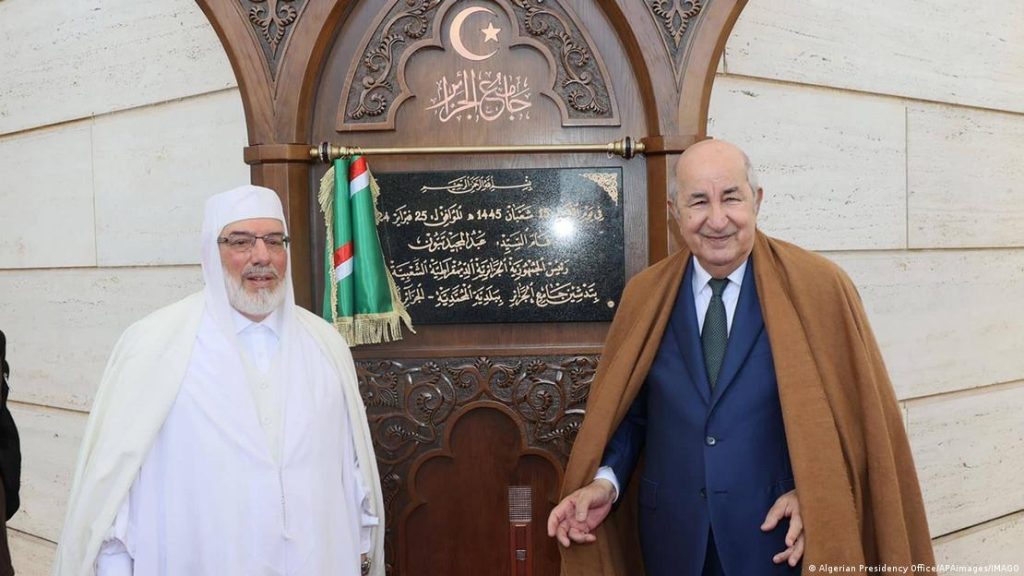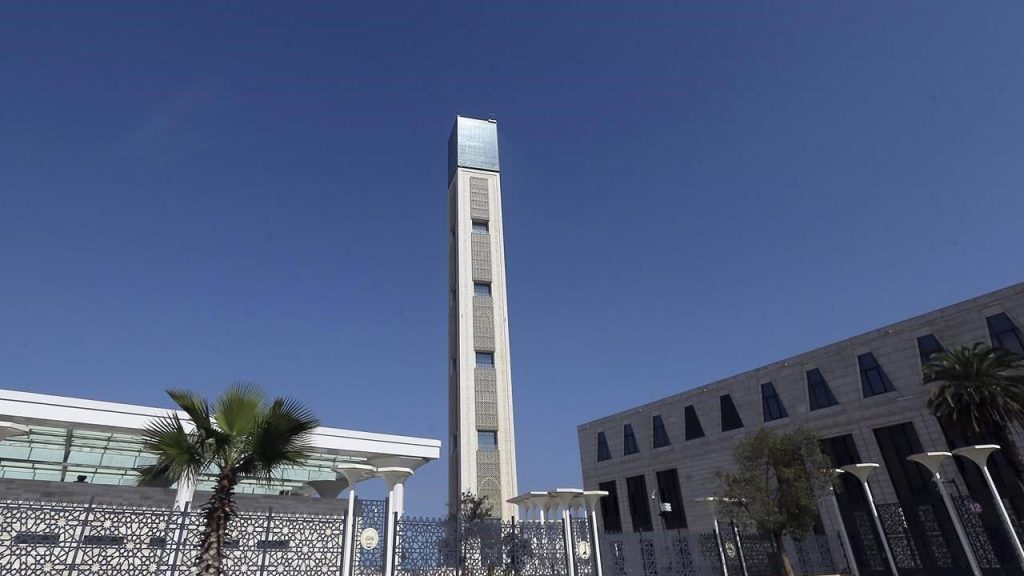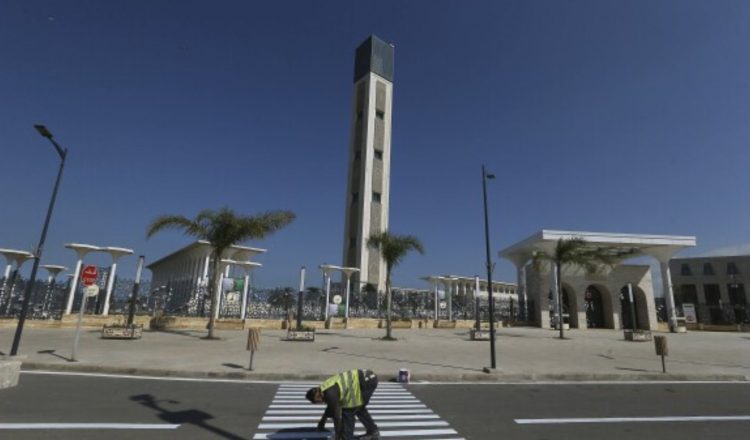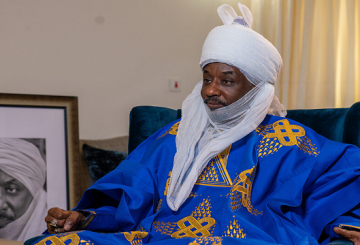Algeria has unveiled a monumental mosque on its Mediterranean coastline, marking a significant milestone after years of political turmoil that delayed its completion.
The Great Mosque of Algiers, inaugurated by Algerian President Abdelmadjid Tebboune on Sunday, is a symbol of the country’s cultural and architectural heritage.

Constructed by a Chinese construction company over the course of the 2010s, the Great Mosque of Algiers boasts the world’s tallest minaret, soaring to an impressive height of 265 meters (869 feet).
This architectural marvel is not only the third-largest mosque globally but also the largest in Africa and the largest outside Islam’s holiest cities. The mosque’s prayer room can accommodate a staggering 120,000 people, making it a significant center for religious gatherings and ceremonies.
In addition to its sheer size, the Great Mosque of Algiers features a host of modern amenities, including a helicopter landing pad and a library capable of holding up to one million books. These facilities are designed to enhance the mosque’s functionality and cater to the diverse needs of its visitors.
However, the construction of the Great Mosque of Algiers was not without its challenges. The project faced numerous delays and disputes during its seven-year construction period, particularly regarding the selection of the site, which experts cautioned was prone to seismic activity.

The official cost of the Great Mosque of Algiers amounted to $898 million, making it one of the most expensive mosque projects in the world. Former President Abdelaziz Bouteflika initiated the project with the vision of making it the largest mosque in Africa.
He had hoped to name it the “Abdelaziz Bouteflika Mosque,” in a similar vein to the Mosque Hassan II in Casablanca, Morocco, which is dedicated to the former King of Morocco.





